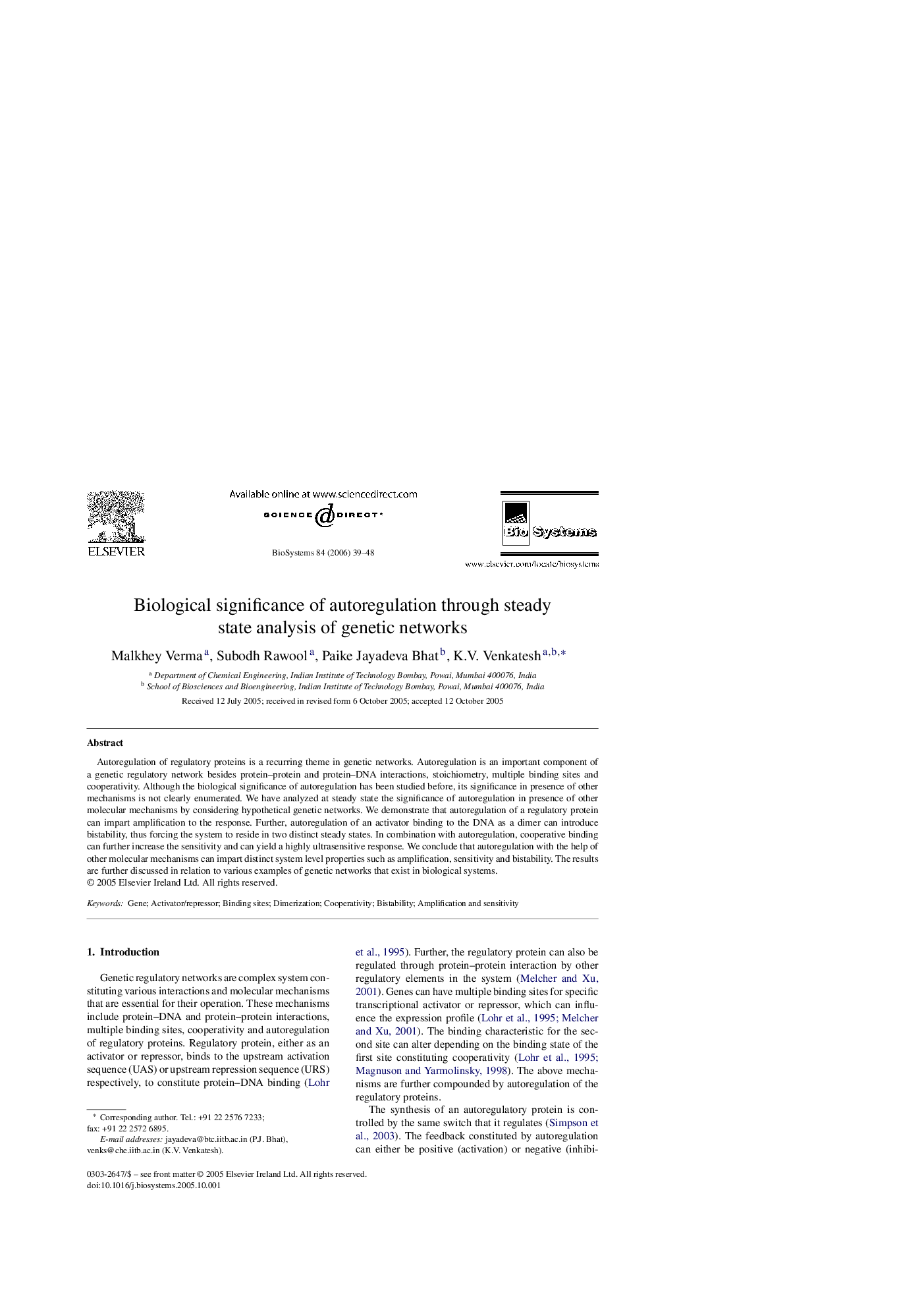| Article ID | Journal | Published Year | Pages | File Type |
|---|---|---|---|---|
| 2076908 | Biosystems | 2006 | 10 Pages |
Abstract
Autoregulation of regulatory proteins is a recurring theme in genetic networks. Autoregulation is an important component of a genetic regulatory network besides protein-protein and protein-DNA interactions, stoichiometry, multiple binding sites and cooperativity. Although the biological significance of autoregulation has been studied before, its significance in presence of other mechanisms is not clearly enumerated. We have analyzed at steady state the significance of autoregulation in presence of other molecular mechanisms by considering hypothetical genetic networks. We demonstrate that autoregulation of a regulatory protein can impart amplification to the response. Further, autoregulation of an activator binding to the DNA as a dimer can introduce bistability, thus forcing the system to reside in two distinct steady states. In combination with autoregulation, cooperative binding can further increase the sensitivity and can yield a highly ultrasensitive response. We conclude that autoregulation with the help of other molecular mechanisms can impart distinct system level properties such as amplification, sensitivity and bistability. The results are further discussed in relation to various examples of genetic networks that exist in biological systems.
Related Topics
Physical Sciences and Engineering
Mathematics
Modelling and Simulation
Authors
Malkhey Verma, Subodh Rawool, Paike Jayadeva Bhat, K.V. Venkatesh,
